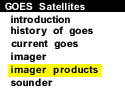
|
The imager detects different wavelengths of energy through different channels. This allows the imager to capture visible light, emitted long wave radiation and other radiation wavelengths. The imager has five "channels" which monitor radiation at a specific wavelength per given channel. Channel and product descriptions are given below:
0.52 - 0.72 micrometers (visible) - at 1 km, useful for cloud, pollution, and haze detection and severe storm identification.
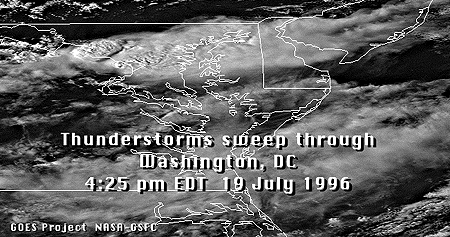
Image provided by GOES-8 Results (NASA-Goddard)
3.78 - 4.03 micrometers (short wave infrared window)
- at 4 km, useful for
identifying fog at night, discriminating between water clouds and snow or
ice crystal clouds, detecting fires and volcanoes, and
determining sea surface temperatures.

Image provided by GOES-8 Results (NASA-Goddard)
6.47 - 7.02 micrometers (upper level
water vapor) -
at 4 km, useful for
estimating regions of mid-level moisture content and advection plus tracking
mid-level atmospheric motions.
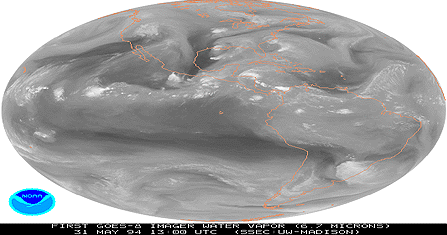
Image provided by GOES-8 Results (NASA-Goddard)
10.2 - 11.2 micrometers
(long wave infrared window)
- at 4 km, familiar to most
users for cloud-drift winds, severe storm identification, and location of heavy
rainfall.
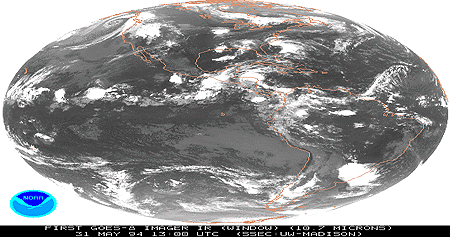
Image provided by GOES-8 Results (NASA-Goddard)
11.5 - 12.5 micrometers
(infrared window more sensitive to water vapor) - at 4 km,
useful for identification of low-level moisture, determination of sea
surface temperature, and detection of airborne dust and volcanic ash.
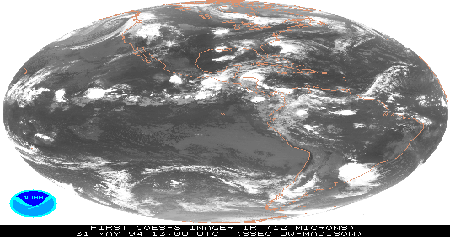
Image provided by GOES-8 Results (NASA-Goddard)
Selected text provided by: Space Science and Engineering Center (UW Madison).

imager |
|

sounder |




